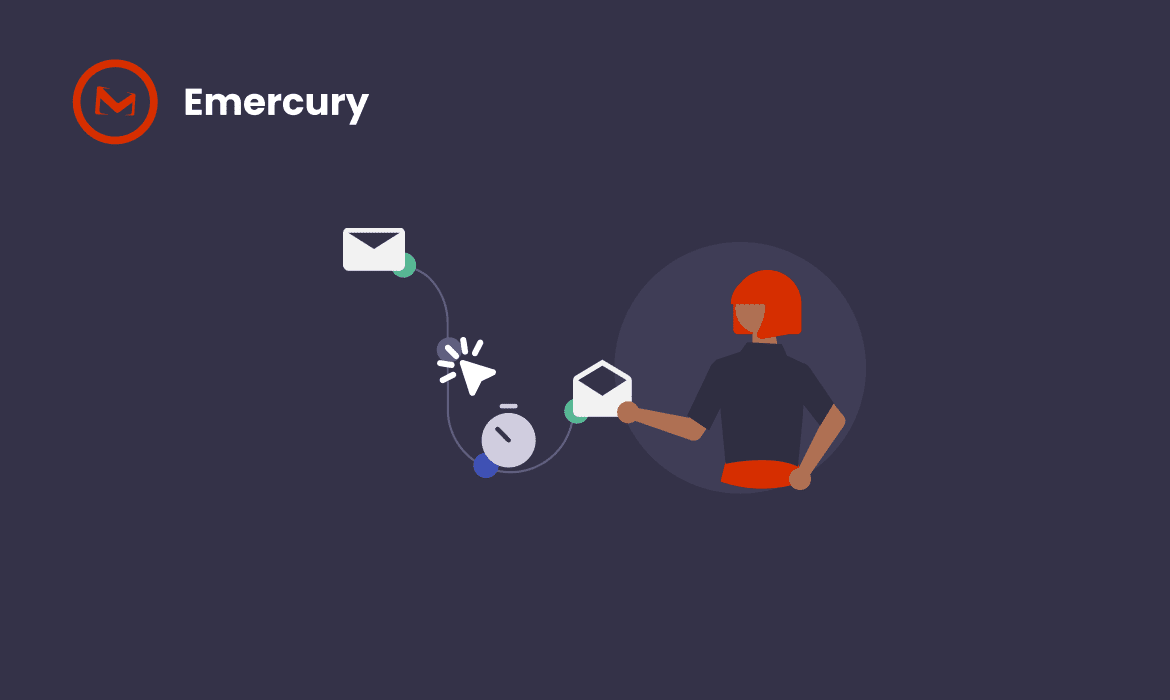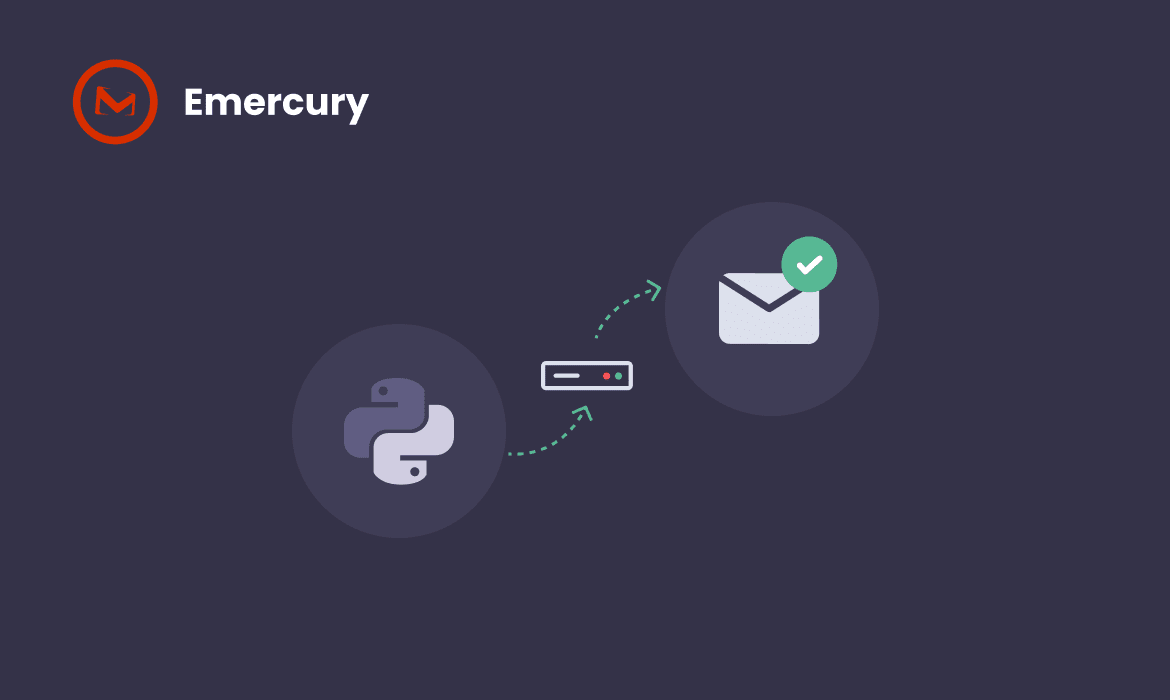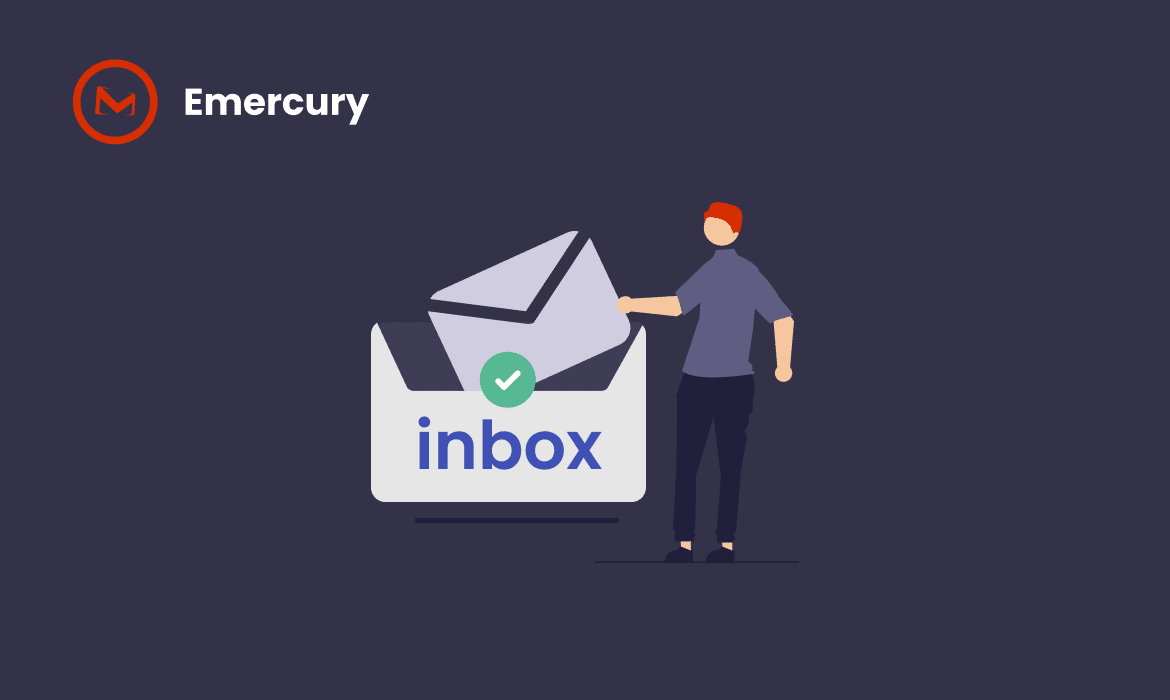But first of all. What is an email list? An email list is a collection of email addresses from people who have given you permission to send them messages. For affiliate marketers, this list becomes a direct communication channel with potential customers who have willingly opted to receive content and product recommendations from you.

Unlike social media followers who exist within platform-controlled ecosystems, your email list is an asset you own completely. Each subscriber represents someone who has raised their hand and expressed interest in your niche, making them far more likely to engage with and purchase through your affiliate links.
When properly nurtured, your email list transforms from a simple database into a community of engaged followers who trust your recommendations and look forward to your content. This direct relationship is what makes email marketing so powerful for affiliates—you’re not competing with algorithms or distractions, just delivering value straight to interested inboxes.
The key is finding an approach that prioritizes what actually drives results: deliverability, engagement, and ROI—not overwhelming complexity or features you’ll never use.
Why Building an Email List for Affiliate Marketing Matters in 2025
“The money is in the list. Email marketing is the bridge between your audience and your business. It’s where relationships turn into revenue.” — FluentCRM Editorial Team, Industry-recognized email marketing platform
In today’s digital marketing landscape, understanding how to build an email list for affiliate marketing has become more crucial than ever before. With the right approach, your email list becomes a powerful asset that drives consistent results throughout 2025 and beyond.
The direct connection to your audience
Email creates an unmatched direct connection with your audience, free from intermediaries or gatekeepers. This directness provides a significant advantage over other marketing channels. Moreover, when your email reaches an inbox, no algorithm determines whether it gets seen—100% of your message can be delivered exactly as intended.
The depth of engagement through email remains impressive, with subscribers being significantly more likely to read emails thoroughly compared to social media followers who often miss posts from brands they follow. This deeper engagement occurs because subscribers have explicitly opted in to receive your content, demonstrating genuine interest in your affiliate recommendations.
Furthermore, email enables precise audience segmentation based on behaviors, preferences, and relationship stage. This segmentation capability allows you to match affiliate products perfectly to audience needs, significantly increasing relevance and conversion potential.
Higher conversion rates compared to other channels
The data clearly demonstrates email’s superior performance in generating conversions:
- Email marketing delivers an astounding USD 36.00 for every USD 1.00 spent—a 3,600% ROI
- Consumers are three times more likely to make a purchase from email compared to social media
- Personalized emails achieve 26% higher open rates compared to non-personalized emails (15%)
Email marketing consistently outperforms other channels because it delivers messages directly to subscribers who have already demonstrated interest in your niche. Subsequently, this makes converting sales on affiliate products or services much easier compared to conventional affiliate marketing tactics.
Protection against algorithm changes
Digital platforms frequently change their policies and algorithms, dramatically affecting your content’s visibility. Conversely, email remains impervious to these shifts. Your email list thrives where connections are built on trust, not algorithms.
For decades, email has demonstrated remarkable staying power. Throughout numerous social media platform launches and algorithm updates, email has remained stable and effective. This protection against external changes provides peace of mind—what happens if an algorithm changes, a platform disappears, or your account gets restricted? Your followers might vanish overnight.
Long-term asset ownership
Perhaps most importantly, your email list represents a business asset you truly own. Unlike social platforms where your audience exists within a third-party ecosystem, email subscribers constitute an owned asset creating significant long-term value.
Industry reports consistently show that owned channels outperform rented channels over long-term periods. Email marketing infrastructure creates lasting value that appreciates over time.
This ownership aspect cannot be overstated—it’s the marketing channel that gives you complete control over your contacts and audience. Ultimately, regardless of shifts in the digital landscape, your ability to communicate shouldn’t depend on a tech company’s priorities or policies.
Understanding the Affiliate Email Marketing Ecosystem
The fusion of email marketing with affiliate promotion creates a powerful synergy that drives results. Learning how to build an email list for affiliate marketing starts with understanding this ecosystem’s fundamentals.
How affiliate marketing and email work together
Email and affiliate marketing form a natural partnership where both elements enhance each other’s effectiveness. In this collaborative model, marketers earn commissions by promoting products through unique referral links delivered directly to subscribers’ inboxes. This approach is inherently cost-effective as commissions remain performance-based—you only pay according to actual conversions.
The partnership works exceptionally well for several reasons. First, email creates a direct channel to connect with subscribers, often yielding higher conversion rates than other affiliate channels like social media or SEO. Second, emails allow for precision targeting through segmentation based on subscriber behaviors and preferences. Finally, email provides measurable results with clear tracking of performance metrics including open rates, click-throughs, and revenue generated.
Current trends shaping email list building in 2025
The affiliate email marketing landscape continues evolving with several notable trends:
- Automation-driven engagement has become essential—setting up automated email sequences for each product allows marketers to focus on audience growth and new product promotion
- Heightened personalization is now expected—segmenting audiences and delivering targeted campaigns has become standard practice to improve open and conversion rates
- Multi-media content integration across email campaigns including video, podcasts, images and audio has proven more engaging than text-only messages
- Value-first approach prioritizes reader benefit over promotional content—successful affiliates focus on solving problems first, then strategically incorporating affiliate links
Setting realistic expectations and goals
Establishing appropriate expectations begins with understanding that email list building requires dedicated effort. Though potentially lucrative, building an engaged audience demands consistency and patience. Many affiliate marketers make the mistake of choosing overly complex platforms that promise everything but deliver confusion—when what really matters is reliable delivery and core functionality that actually gets used.
For goal-setting, focus first on creating valuable content that educates or solves problems rather than solely promoting products. Track key metrics including open rates, click-through rates, and conversion percentages to refine your approach.
Realistic expectations should acknowledge that success requires:
- Building trust through authenticity and transparency
- Maintaining consistent communication
- Providing genuine value beyond promotional content
- Testing different approaches to find what resonates with your specific audience
Ultimately, the most successful affiliate email marketers balance promotion with value, creating messages that subscribers genuinely look forward to receiving.
Mapping Your Audience Journey
Successful affiliate email marketing hinges on deeply understanding who your subscribers are and what they truly need. Learning how to build an email list for affiliate marketing starts with mapping the journey your subscribers take from initial interest to purchase.
Creating detailed buyer personas
Buyer personas are semi-fictional representations of your ideal customers based on data and research. These detailed profiles help you visualize who you’re communicating with, essentially making marketing decisions more customer-centric. According to research, personalized emails achieve 26% higher open rates compared to generic messages. To create effective personas, collect demographic information (age, location, gender), psychographic details (interests, values), and behavioral data (purchasing habits, online activity). Remember that most businesses benefit from developing multiple personas—typically one to five to start.
Identifying pain points and desires
Pain points are specific problems your audience experiences that your affiliate products can solve. These challenges generally fall into four main categories:
- Financial: Budget constraints, pricing concerns
- Time-related: Efficiency issues, process frustrations
- Product/service: Missing features, quality concerns
- Emotional: Feeling overwhelmed or undervalued
To uncover these pain points, utilize surveys (cost-effective with strong response rates), social listening (tracking social media conversations), and live chat on your website. In fact, analyzing customer support queries often reveals recurring issues worth addressing.
Matching affiliate products to audience needs
Once you understand your audience’s challenges, match affiliate products that specifically address those needs. This alignment creates authentic recommendations that genuinely help subscribers. For instance, if your data shows subscribers struggle with time management, promote productivity tools. Whereas, if financial concerns dominate, highlight cost-saving solutions or products offering exceptional value.
Segmentation strategies for targeted promotions
Email segmentation divides your list into smaller groups for targeted messaging. Statistics show segmented campaigns achieve significantly higher open rates than non-segmented ones. Effective segmentation strategies include:
- Demographic segmentation (age, location, income)
- Behavioral segmentation (past purchases, site interactions)
- Engagement-based segmentation (active vs. inactive subscribers)
- Purchase history segmentation (one-time buyers vs. repeat customers)
Despite making up only a small percentage of total email volume, properly segmented automated emails generate a disproportionately high percentage of all email-driven sales. This focused approach ensures each subscriber receives content relevant to their specific needs.
Building Your Email List Acquisition Strategy
Growing your subscriber base requires diverse approaches that capture emails from multiple channels. How to build an email list for affiliate marketing becomes simpler with the right acquisition tactics.
Content marketing approaches
Creating valuable content that addresses your audience’s needs naturally attracts potential subscribers. Opt for high-quality gated assets like ebooks, guides, or templates that visitors receive after providing their email address. Compelling opt-in forms with clear messaging and appealing design play a crucial role in conversion. The landing pages should align perfectly with your opt-in promise, reiterating the offer and guiding visitors on redemption steps.
Social media list building tactics
Social media platforms serve as excellent venues for expanding your email subscriber base. Create a Facebook Business Page with a dedicated “Sign Up” button linked directly to your landing page. Meanwhile, Instagram allows you to share exclusive content previews that encourage followers to subscribe for complete access. Additionally, LinkedIn Company Pages can be optimized with customized CTA buttons for email signups.
Currently, email marketing delivers an impressive return on investment, with subscribers staying engaged longer than social followers – 55% read emails thoroughly versus only 27% who see all social posts.
Paid traffic methods
Running targeted Facebook ads effectively accelerates list growth. With a daily budget of approximately $10, you can generate five leads at roughly $2 each. Notably, implementing a tripwire funnel—a low-cost offer immediately after opt-in—can offset advertising costs. A $20 tripwire product with a 10% conversion rate effectively covers your ad expenses every two days.
Partnership and cross-promotion opportunities
Newsletter swaps represent an effective collaboration strategy—team up with complementary (not competing) creators to promote each other’s offerings. Typically, such partnerships can generate around 50+ new signups within 24 hours. Bundle events, involving free giveaways in exchange for email signups, typically yield 100+ new subscribers per event.
Contest and giveaway strategies
Giveaways create excitement while building your list. First, clearly define your target audience and select prizes specifically valued by that audience. Next, establish transparent rules and create a dedicated landing page for entries. A well-crafted giveaway can add 6,507 new subscribers in just 25 days.
The key elements for successful giveaways include:
- Creating simple entry processes to maximize participation
- Establishing clear deadlines to create urgency
- Automating welcome emails to confirm entries
- Following up with all participants after announcing winners
Sweepstakes properly targeted to your audience not only grow your list but ensure subscribers stay engaged afterward, as they’re genuinely interested in your offers.
Common pitfalls to avoid
As you build your acquisition strategy, be aware of these common mistakes that can sabotage your efforts:
- Choosing email platforms that lock essential features behind expensive tiers, forcing you to upgrade just to access basic segmentation or automation
- Getting distracted by flashy features instead of focusing on fundamentals like deliverability and list hygiene
- Relying on chatbot support when you need real expertise to solve delivery issues
- Paying for features you don’t need while missing critical tools like spam scoring and content analysis
The most successful affiliate marketers choose platforms that prioritize core functionality and deliverability over feature bloat.
Designing Your Email List Infrastructure
The technical foundation of how to build an email list for affiliate marketing strategy determines its long-term effectiveness. Creating a proper infrastructure ensures your affiliate campaigns convert consistently once visitors arrive.
Landing page optimization
Effective landing pages focus entirely on capturing email addresses. First, eliminate distractions by removing navigation menus and unnecessary links that might draw attention away from your opt-in form. Mobile responsiveness remains absolutely crucial—landing pages must load quickly and display properly across all devices. Create clear, compelling CTAs with language that emphasizes benefits rather than actions. For instance, “Get Your Free SEO Checklist” performs better than generic phrases like “Subscribe Now”.
Thank you page monetization
Thank you pages represent more than just confirmation—they’re prime opportunities for immediate monetization. A properly designed thank you page serves multiple functions: confirming subscriber action, providing clear next steps, and presenting additional offers. Consider implementing these strategies:
- Offer related products or complementary services with a special discount code
- Include personalized recommendations based on subscriber interests
- Ask for referrals when engagement is highest
- Add social sharing buttons to expand reach
Studies show thank you pages effectively increase customer retention and maximize customer value through strategic cross-selling opportunities.
List segmentation setup
Proper segmentation dramatically increases email effectiveness—segmented campaigns achieve 23% higher open rates than non-segmented ones. Yet many email platforms gate this essential feature behind premium tiers, treating basic functionality as a luxury rather than a necessity. The best platforms understand that segmentation should be accessible to all users, not used as pricing leverage.
Initially, establish basic segmentation categories such as:
- Geographic location (especially valuable for location-specific offers)
- Interest-based segments (based on lead magnet choices)
- Engagement levels (active versus inactive subscribers)
- Purchase history (for targeted follow-up promotions)
Even simple segmentation outperforms generic messaging, as properly segmented emails generate 37% of all email-driven sales yet constitute only 2% of email volume.
Automation workflow creation
Automation transforms manual tasks into automatic sequences triggered by specific subscriber actions. Develop workflows for key subscriber milestones, particularly welcome sequences that nurture new subscribers. Studies show welcome emails receive exceptionally high open rates as subscribers actively expect them. Automation helps segment contacts without manual effort, making the process more efficient and accurate. Beyond welcome sequences, create automated workflows for:
- Abandoned cart reminders
- Re-engagement campaigns for inactive subscribers
- Product recommendation sequences based on browsing behavior
Setting up these automation workflows creates repeatable marketing experiences that save time while delivering consistently personalized content.
Writing Emails That Convert for Affiliate Marketing
“There is no formula for the perfect email — Authentic and honest messaging works.” — Anonymous, Widely cited in email marketing best practices
Crafting persuasive emails remains central to how to build an email list for affiliate marketing success. Your ability to convert subscribers into customers ultimately determines your affiliate revenue.
Storytelling frameworks that sell
Implementing storytelling in emails transforms promotional content into compelling narratives. The Hero’s Journey framework—modified for email marketing—guides readers through a transformation while establishing emotional connections. Research indicates people retain information up to 22 times better when presented in narrative form versus plain facts. Effective storytelling typically includes a relatable protagonist facing a challenge, with your affiliate product offering the resolution.
Creating compelling subject lines
Subject lines determine whether subscribers open your emails or send them to trash. Emails with concise subject lines of 6-10 words tend to achieve the highest open rates. Personalization boosts open rates dramatically—using a recipient’s name can significantly improve open rates. Indeed, many recipients decide to open emails based solely on the subject line.
Structuring promotional content
Organize email content with clear sections—introduction, body, and call-to-action. Start with a captivating opener that establishes relevance, follow with persuasive content highlighting benefits, then conclude with a prominent CTA. Throughout, use short paragraphs, bullet points, and subheadings to improve readability.
Using psychology triggers ethically
Psychological triggers drive action when used authentically. Effective triggers include:
- Fear of Missing Out (FOMO) creates urgency, boosting click-to-sale rates significantly
- Social proof through testimonials can dramatically increase conversions
- Authority signals help raise conversion rates
Compliance and disclosure best practices
The FTC requires clear disclosure of affiliate relationships. Place disclosures near your recommendations, not buried in footers. Simple statements like “This post contains affiliate links. If you click, I earn a commission at no extra cost to you” satisfy requirements while maintaining transparency.
A/B testing methodology
Test single variables to identify what drives conversions. Common elements to test include subject lines, CTAs, email length, and promotional language. Data shows A/B testing can significantly boost performance—some tests yield 127% increases in click-throughs. Consistently test, analyze, and refine to maximize conversion rates.
Beyond basic A/B testing, advanced affiliate marketers rely on comprehensive spam scoring and content analysis tools to ensure their carefully crafted messages actually reach the inbox. Without proper deliverability testing, even the best-written emails become worthless.
Scaling and Optimizing Your Affiliate Email List
Maintaining your email list becomes vital once you’ve mastered how to build an email list for affiliate marketing. Regular optimization ensures your messages reach engaged subscribers who actually convert.
List cleaning and maintenance
A healthy email list directly impacts your affiliate marketing success. As your list grows, the percentage of unengaged subscribers naturally increases too, potentially harming your deliverability rates. Regular cleaning helps maintain optimal performance by removing problematic addresses that could damage your sender reputation.
Effective list maintenance practices include:
- Removing invalid or outdated email addresses
- Eliminating duplicate subscribers
- Focusing on obtaining explicit opt-ins
- Sending relevant content that encourages engagement
Even though it might feel counterintuitive to shrink your list, remember that quality outweighs quantity. A smaller list of engaged subscribers consistently delivers better results than a massive list of uninterested contacts. During cleaning, prioritize removing:
- Hard-bounced addresses (invalid or non-existent)
- Addresses generating spam complaints
- Long-term inactive subscribers (6-12 months without engagement)
Reactivation campaigns for cold subscribers
Before permanently removing inactive subscribers, try winning them back with strategic re-engagement campaigns. A well-executed reactivation sequence can recover a meaningful portion of your inactive subscribers, with exceptional campaigns achieving even better results.
The standard timeframe for identifying inactive subscribers is 90 days without engagement, although this varies based on your sending frequency. Your reactivation sequence should include 2-3 targeted emails with clear subject lines explaining your purpose.
Effective reactivation approaches include:
- Offering exclusive discounts or free gifts
- Providing options to receive fewer emails
- Asking directly if they still want to hear from you
- Sharing your best evergreen content
Set a final deadline after your reactivation attempts. If subscribers remain unresponsive, respect their implied preference by removing them from your active list.
What to Look for in an Email Marketing Platform
Before selecting your email marketing platform, consider these critical factors that separate professional-grade solutions from amateur tools:
Deliverability-first approach
Your emails are worthless if they don’t reach the inbox. Look for platforms that provide real-time deliverability monitoring, spam scoring, and proactive alerts about potential issues. Many platforms focus on features while ignoring this fundamental requirement.
Transparent, usage-based pricing
Beware of platforms that use feature restrictions to force upgrades. The best solutions charge based on what you actually send, not by limiting access to essential tools. You shouldn’t need the “enterprise” plan just to segment your list properly.
Human expertise, not chatbots
When deliverability issues arise (and they will), you need access to real experts who understand email marketing, not outsourced support reading from scripts. In-house support teams who work directly with the platform developers make all the difference.
Focus on ROI-driving features
Avoid platforms that prioritize trendy features over proven fundamentals. The tools that actually impact your bottom line—segmentation, automation, deliverability monitoring, and analytics—should be robust and accessible, not afterthoughts.
Built for volume and scale
Affiliate marketers often send high volumes of email. Your platform should handle this gracefully with tools like IP warming, sender reputation management, and throttling capabilities built in—not as expensive add-ons.
A Platform Built for Affiliate Success: How Emercury.net Addresses Common Email Marketing Challenges
After understanding what makes a great email platform, let’s examine how these principles apply in practice. Emercury.net exemplifies the deliverability-first, ROI-focused approach that experienced affiliate marketers seek. Rather than chasing trends, they’ve built their platform around what actually drives results.
List Analysis
From the moment you import your subscriber list, Emercury provides comprehensive insights into its makeup. This immediate analysis gives you a clear picture of which contacts are available for mailing and which might pose deliverability risks. Plus, this initial assessment helps you make a positive first impression with ISPs, increasing your chances of inbox placement.
Deliverability for Performance
Emercury partners directly with users to develop personalized email strategies that maximize deliverability. Their team includes dedicated experts who guide marketers toward better engagement practices. Consequently, users typically see marked improvements in their email performance metrics. The platform even provides real-time alerts for URL blacklisting, deferrals, content blocking, and authentication failures.
Content Scoring to Avoid Spam Filters
The platform offers proprietary spam checking tools that score your content before sending. This allows you to make necessary adjustments to avoid triggering spam filters. Given that a significant portion of all emails are labeled as spam, this feature protects countless potential leads and sales opportunities.
Advanced Segmentation to Increase Engagement
Emercury enables grouping subscribers based on virtually any factor. Through effective segmentation, you’ll achieve higher engagement by sending the right content to people who actually want it. This targeted approach ensures each contact receives personally relevant messages, resulting in better performance while spending less.
Domain Analytics to Track Real ROI
The platform provides detailed tracking capabilities that monitor crucial metrics like open rates and click-through rates. These insights allow you to optimize campaigns based on real data about what works with your audience.
Pay for What You Send
Unlike other providers, Emercury’s pricing model ensures you only pay for emails you actually send. This cost-efficiency is particularly valuable for affiliate marketers focused on maximizing ROI from their campaigns.
Conclusion
Building an email list for affiliate marketing represents a powerful strategy that delivers exceptional results when done correctly. Throughout this guide, we’ve explored the many facets of email list building – from creating compelling lead magnets to designing high-converting landing pages and writing emails that drive action.
Email marketing continues to outshine other digital channels with its impressive 3,600% ROI and direct connection to interested audiences. Additionally, your email list becomes an asset you truly own, immune to algorithm changes that frequently disrupt other marketing channels.
Remember that quality always trumps quantity when learning how to build an email list for affiliate marketing. Focus on attracting genuinely interested subscribers rather than simply accumulating email addresses. Afterward, nurture these relationships through valuable content that solves problems while strategically promoting relevant affiliate offers.
Start implementing these strategies today, even if you begin with just one or two tactics. Your future self will thank you as your affiliate commissions grow alongside your engaged email community.
Remember that your choice of email platform can make or break your success. Whether you choose a feature-heavy solution or a focused platform like Emercury that prioritizes deliverability and core functionality, ensure it aligns with your actual needs rather than overwhelming you with unnecessary complexity.
The path to success involves consistent effort, but with the right tools and approach, the rewards – both financial and relational – make this journey worthwhile.
Key Takeaways
Master these essential strategies to build a profitable affiliate marketing email list that generates consistent revenue and creates lasting audience relationships.
- Email delivers exceptional ROI: Email marketing generates $36 for every $1 spent with 3,600% ROI, making it the most profitable channel for affiliate marketers.
- Focus on quality over quantity: Build engaged subscriber lists through valuable lead magnets and targeted content rather than purchasing generic email lists that rarely convert.
- Segment for higher conversions: Segmented email campaigns achieve 23% higher open rates and generate 37% of all email-driven sales despite being only 2% of total volume.
- Own your audience asset: Unlike social media followers subject to algorithm changes, your email list represents a business asset you control completely and permanently.
- Automate for scalable success: Welcome sequences and automated workflows nurture subscribers efficiently while maintaining personalized communication that builds trust and drives affiliate sales.
- Choose platforms wisely: Select email marketing platforms that prioritize deliverability, core functionality, and human support over feature bloat and pricing games.
Building an effective affiliate email list requires strategic planning, but the long-term benefits—direct audience access, algorithm independence, and superior conversion rates—make it an invaluable investment for sustainable affiliate marketing success.
FAQ
- What is an affiliate email list?
An affiliate email list is a collection of subscribers who have opted in to receive content and affiliate offers via email. - Why is building an email list important for affiliate marketing?
It gives you direct access to your audience without relying on third-party platforms, increasing conversions and long-term control. - How do I start building an email list for affiliate marketing?
Start by selecting a marketing platform, creating a lead magnet, setting up opt-in forms, and building a welcome email sequence. - What kind of lead magnets work best?
Checklists, free tools, tutorials, and exclusive discounts are great for attracting targeted subscribers. - How can I grow my email list fast?
Use social media CTAs, paid ads, giveaways, newsletter swaps, and contests to accelerate list growth. - How do I segment my affiliate email list?
Segment by behaviors, demographics, engagement level, and purchase history to send more personalized, effective emails. - What email platform is best for affiliate marketers?
Emercury.net offers segmentation, deliverability tools, spam scoring, and pay-per-send pricing ideal for affiliate needs. - What makes a good email for promoting affiliate products?
Use storytelling, strong subject lines, ethical persuasion triggers, and a clear CTA to increase conversions. - How do I keep my list clean and engaged?
Regularly remove inactive or invalid emails, run reactivation campaigns, and send consistent, value-driven content. - Is it better to have a small engaged list or a large list?
A small engaged list often outperforms a large unengaged one in affiliate conversions and deliverability.



